Tierra del Fuego, Ushuaia and surroundings#
In 1881 Tierra del Fuego was divided into two parts, a western Chilean part and an eastern Argentine part, by a meridian. Altogether 135.000 people live in the region, 127.000 of them in the Argentine part and 8.000 in the Chilean. The most important cities on the main island are Río Grande (Argentina, approx. 67.000 inhabitants), Ushuaia (Argentina, approx. 57.000 inhabitants) and Puerto Williams (Chile, 2.300 inhabitants). Hunters settled for the first time in the area between 9800 and 8280 B.C., subsisting on American wild horses, ground sloths and other grazers.
Generally speaking, the archipelago is situated in the cool-temperate zone with a maritime climate, although big differences occur locally. In the western parts of the Tierra del Fuego precipitation of up to 6.000mm/ year annually can be found whereas the eastern part is much drier with rainfalls of only about 250mm/ year. Local climatic differences are mirrored by the fact that the flora also differs, in Tierra del Fuego rainforests as well as semi-deserts occur.
1881 wurde Feuerland durch einen Meridian in zwei Teile geteilt, einen westlichen chilenischen Teil und einen östlichen argentinischen Teil. Insgesamt leben 135.000 Menschen in der Region, wobei 127.000 von ihnen im argentinischen und 8.000 im chilenischen Teil leben. Die bedeutendsten Orte der Hauptinsel sind Río Grande (ca. 67.000 Einwohner, Argentinien), Ushuaia (ca. 57.000 Einwohner, Argentinien) und Puerto Williams (ca. 2.300 Einwohner, Chile). Erstmals siedelten zwischen 9800 und 8280 v. Chr. Jägergruppen, die sich von amerikanischen Wildpferden, Riesenfaultieren und anderen Grasfressern ernährten, in Feuerland.
Generell lässt sich sagen, dass die Inselgruppe in der kühl-gemäßigten Zone mit maritimem Klima liegt, wobei jedoch lokal große Unterschiede herrschen. Im Westen fallen jährlich bis zu 6.000mm/ Jahr an Niederschlägen, der Osten hingegen ist wesentlich trockener, dort fallen nur etwa 250mm/ Jahr. Die lokalen klimatischen Unterschiede spiegeln sich auch in der Flora wieder, es gibt in Feuerland sowohl Regenwald als auch Halbwüsten.
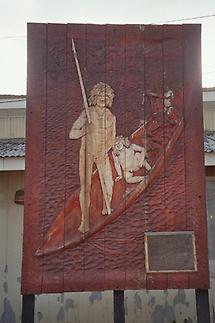 Surroundings of Ushuaia
Surroundings of Ushuaia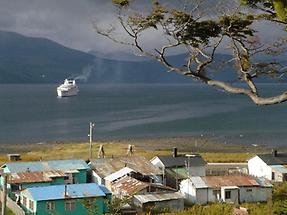 Esplanade in Ushuaia (1)
Esplanade in Ushuaia (1)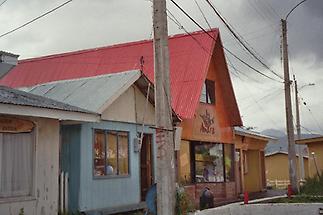 Esplanade in Ushuaia (2)
Esplanade in Ushuaia (2)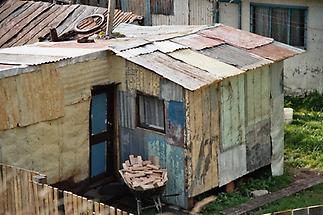 Esplanade in Ushuaia (3)
Esplanade in Ushuaia (3)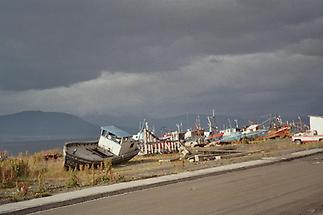 Esplanade in Ushuaia (4)
Esplanade in Ushuaia (4)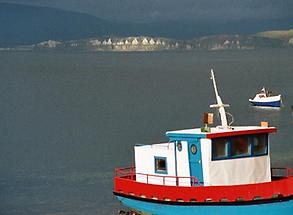 Esplanade in Ushuaia (5)
Esplanade in Ushuaia (5)- Esplanade in Ushuaia (6)
- Esplanade in Ushuaia (7)
- Esplanade in Ushuaia (8)
- Esplanade in Ushuaia (9)
- Esplanade in Ushuaia (10)
- View of Ushuaia (1)
- View of Ushuaia (2)
- View on Ushuaia (3)
- View on Ushuaia (4)
- Glaciar Martial (1)
- Glaciar Martial (2)
- Glaciar Martial (3)
- On the way to Lago Escondido (1)
- On the way to Lago Escondido (2)
- On the way to Lago Escondido (3)
- On the way to Lago Escondido (4)
- On the way to Lago Escondido (5)
- On the way to Lago Escondido (6)
- On the way to Lago Escondido (7)
- Lago Escondido (1)
- Lago Escondido (2)
- Lago Escondido (3)
- Lago Escondido (4)
- On the way to the Estancia Harberton (1)
- On the way to the Estancia Harberton (2)
- On the way to the Estancia Harberton (3)
- Estancia Harberton (1)
- Estancia Harberton (2)
- Estancia Harberton (3)
- Estancia Harberton (4)
- Estancia Harberton (5)
- Estancia Harberton (6)
- Estancia Harberton (7)
- On the way back to Ushuaia (1)
- On the way back to Ushuaia (2)
- On the way back to Ushuaia (3)
- On the way back to Ushuaia (4)
- On the way back to Ushuaia (5)
- Ferrocarril Austral Fueguino (1)
- Ferrocarril Austral Fueguino (2)
- Ferrocarril Austral Fueguino (3)
- Parque Nacional Tierra del Fuego (1)
- Parque Nacional Tierra del Fuego (2)
- Parque Nacional Tierra del Fuego (3)
- Parque Nacional Tierra del Fuego (4)
- Parque Nacional Tierra del Fuego (5)
- Parque Nacional Tierra del Fuego (6)
- Parque Nacional Tierra del Fuego (7)
- Parque Nacional Tierra del Fuego (8)